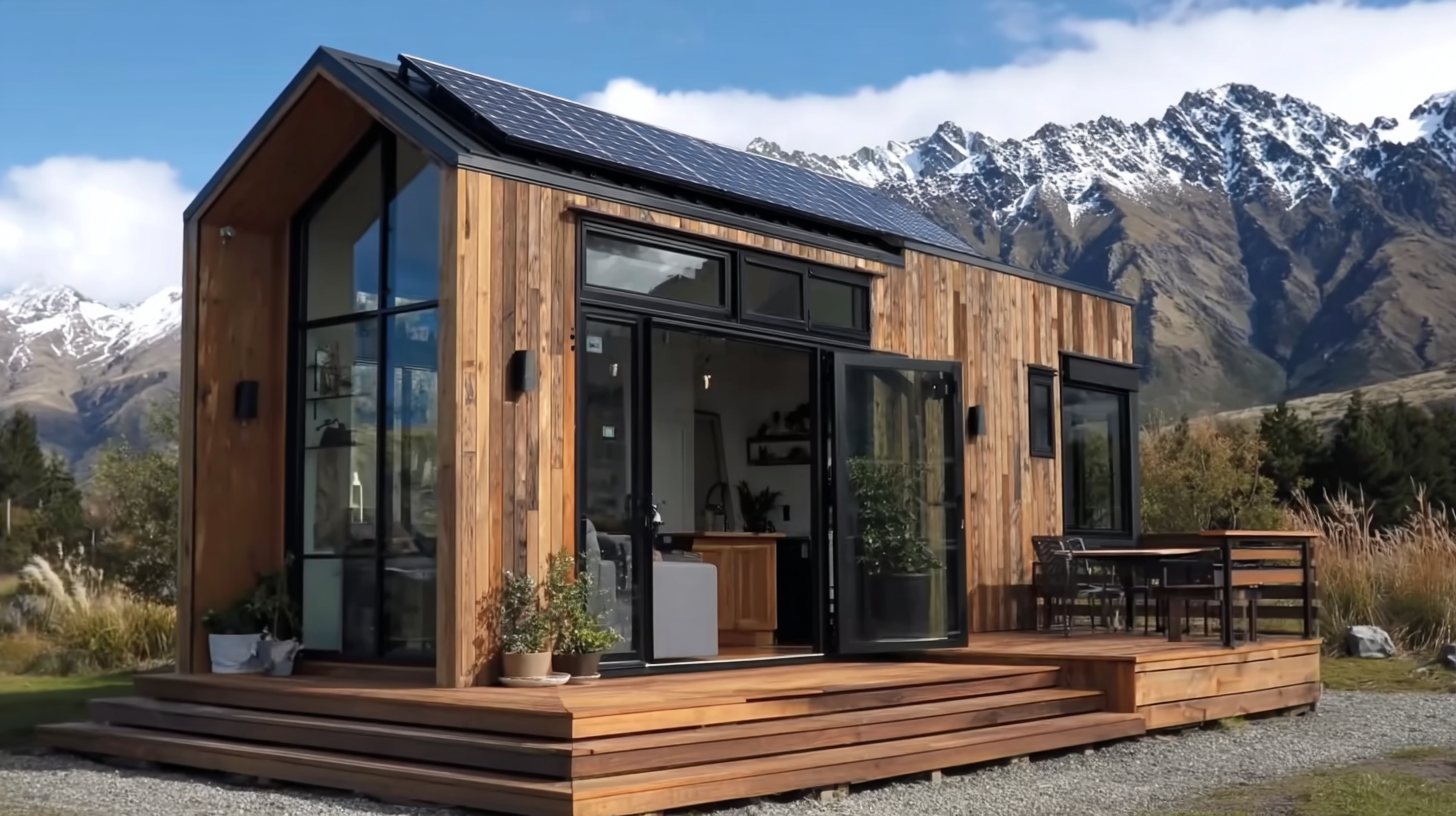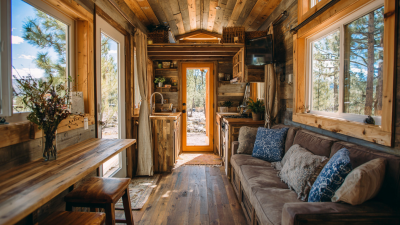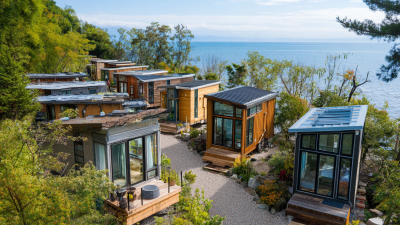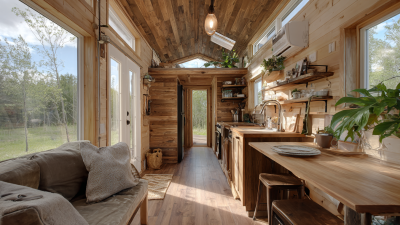Exploring the Future of Living with Innovative Prefab Tiny Homes
The future of living is being reshaped by the innovative concept of prefab tiny homes, which are increasingly capturing the attention of homeowners and investors alike. According to a recent report by the International Energy Agency, the demand for sustainable housing solutions is projected to grow by 20% over the next decade, highlighting a significant shift towards eco-friendly living. Prefab tiny homes, which offer a compact yet efficient design, are becoming a viable alternative to traditional housing models, not only due to their cost-effectiveness but also their reduced environmental footprint. A study from the National Association of Home Builders indicates that 63% of American adults are open to downsizing and embracing minimalist lifestyles, further propelling interest in these innovative dwellings. As we explore the future of living, prefab tiny homes stand out as a promising solution that aligns with contemporary demands for sustainability, affordability, and mobility.

Innovative Prefab Tiny Homes: A Sustainable Solution for Urban Housing Shortages
In recent years, the rise of urban populations has led to significant housing shortages in many cities worldwide. Innovative prefab tiny homes present a groundbreaking solution to this pressing issue, combining affordability, sustainability, and efficiency. These modular homes are constructed off-site and can be rapidly assembled in urban areas, significantly reducing the time and cost involved in traditional building processes. Their compact designs make it possible to efficiently use limited space, allowing for creative community planning and fostering a sense of neighborhood amidst urban density.

Moreover, prefab tiny homes are often constructed using eco-friendly materials and energy-efficient systems, aligning with the growing demand for sustainable living. By incorporating renewable energy sources, such as solar panels, and efficient insulation techniques, these homes minimize their carbon footprint, addressing environmental concerns while providing affordable housing options. As cities continue to grapple with the challenges of urbanization, these innovative solutions not only offer a practical response to housing shortages but also pave the way for a more sustainable and resilient urban future.
Market Growth Projections: The Rise of the Prefab Tiny Home Industry by 2030
The prefab tiny home industry is poised for remarkable growth by 2030, driven by shifting consumer preferences towards sustainability, affordability, and mobility. In recent years, more people have embraced minimalistic living, fueling demand for innovative housing solutions that combine functionality with eco-friendliness. As urbanization continues to accelerate, the desire for compact living spaces that minimize ecological footprints has gained momentum, presenting substantial opportunities for prefab home manufacturers.
Market projections indicate that the prefab tiny home sector will experience significant expansion, with advancements in technology and design paving the way for more customizable options. Innovations such as smart home features and sustainable materials are attracting a new demographic of buyers, including millennials and retirees seeking flexible living arrangements. As awareness of the environmental impact of traditional housing grows, the prefab tiny home model offers a compelling alternative—balancing comfort, style, and sustainability. This transformation in the housing landscape underscores the potential for prefab homes to become a mainstream living option in the coming decade.
Cost-Effectiveness of Prefab Tiny Homes: Analyzing Affordability Compared to Traditional Housing
As the housing market continues to evolve, the emergence of prefabricated (prefab) tiny homes offers a cost-effective alternative to traditional housing. According to the "2021 Tiny House Statistics" report, the average cost of a tiny home ranges between $30,000 to $60,000, significantly lower than the median price of a regular home, which was reported at over $400,000 in the same year. This stark contrast positions prefab tiny homes as an accessible option for many individuals and families seeking affordable housing solutions.
In addition to initial cost savings, prefab tiny homes also incur lower utility and maintenance costs, enhancing their affordability in the long run. The National Association of Home Builders reports that tiny homes often boast energy-efficient designs, reducing monthly bills by an estimated 30%. Moreover, the speed of construction—usually completed within a few months—means buyers can avoid additional rental costs while their homes are being built.
Tips for potential buyers:
- Research Financing Options: Look into specialized loans for tiny homes, which can offer better terms than conventional mortgage options.
- Consider Your Needs: Assess your lifestyle and choose a tiny home that balances space and functionality without compromising your requirements.
- Stay Informed on Zoning Laws: Complying with local zoning regulations is crucial when planning to place a tiny home, ensuring that your investment is protected.

Design Innovations in Tiny Homes: Maximizing Space and Efficiency with Smart Technology
In the realm of modern living, innovative prefab tiny homes are at the forefront of design solutions that prioritize space efficiency and smart technology integration. These compact residences utilize cutting-edge design innovations to maximize utility without sacrificing comfort. By employing multifunctional furniture and modular designs, tiny homes can adapt to varied lifestyles, making them appealing to a wide audience, from minimalists to suburban dwellers seeking downsized living.
Furthermore, the integration of smart technology enhances the convenience and functionality of these spaces. With advancements in home automation, residents can control lighting, temperature, and security systems through their smartphones, creating a seamless living experience. As seen in the growing demand for high-end lighting solutions—a market predicted to exceed $20.26 billion by 2024—the trend toward luxurious yet functional design is evident. This shift reflects a broader consumer desire for aesthetics combined with efficiency, positioning prefab tiny homes as not just a housing alternative, but as a stylish and modern approach to living.
Environmental Impact: The Carbon Footprint Reduction of Prefab Living Solutions
Prefab tiny homes are increasingly recognized as a sustainable living solution with a significantly reduced carbon footprint. These homes are manufactured in a controlled environment, which minimizes waste and ensures energy efficiency. The assembly process utilizes modern techniques and sustainable materials, further contributing to their eco-friendly appeal. By reducing the time and resources required for traditional construction, prefab homes advocate for environmental responsibility and offer homeowners a chance to live more sustainably.
Tips for embracing prefab living: Consider utilizing locally sourced materials to further decrease transportation emissions. Additionally, when designing your tiny home, prioritize energy-efficient appliances and renewable energy sources, such as solar panels, to enhance your home's sustainability. Lastly, be mindful of your overall lifestyle choices, integrating practices that promote minimalism and reduce waste.
As the trend of prefab tiny homes grows, they serve as a reminder of how innovation can align with environmental goals. By choosing this modern living solution, individuals not only minimize their ecological impact but also support a more sustainable future for all. With careful planning and commitment to green practices, this lifestyle can lead to a significant decrease in one’s overall carbon footprint.
Related Posts
-

Exploring Sustainable Living: The Rise of Prefab Tiny Houses in Modern Eco-Friendly Design
-

Exploring the Future of Living with Innovative Tiny Home Models
-

Exploring the Tiny House Movement: How Minimalism is Shaping Sustainable Living Today
-

Exploring the Rise of Micro Homes in Sustainable Living Trends
-

Discover the Hidden Benefits of Living in Tiny Homes for Sustainable Lifestyles
-

Discover the Freedom of Living Light with Portable Tiny Homes
